- 1011 Budapest, Bem rakpart 12.
- +36 1 201 5082
- M-S: 12:00-24:00, kitchen to: 22:30
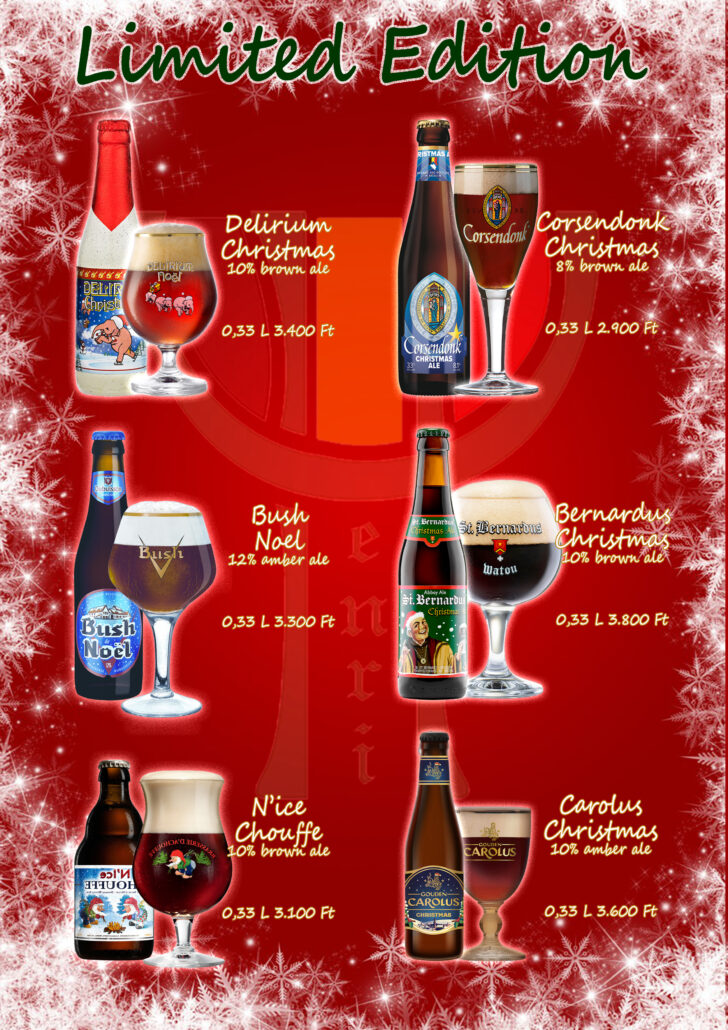
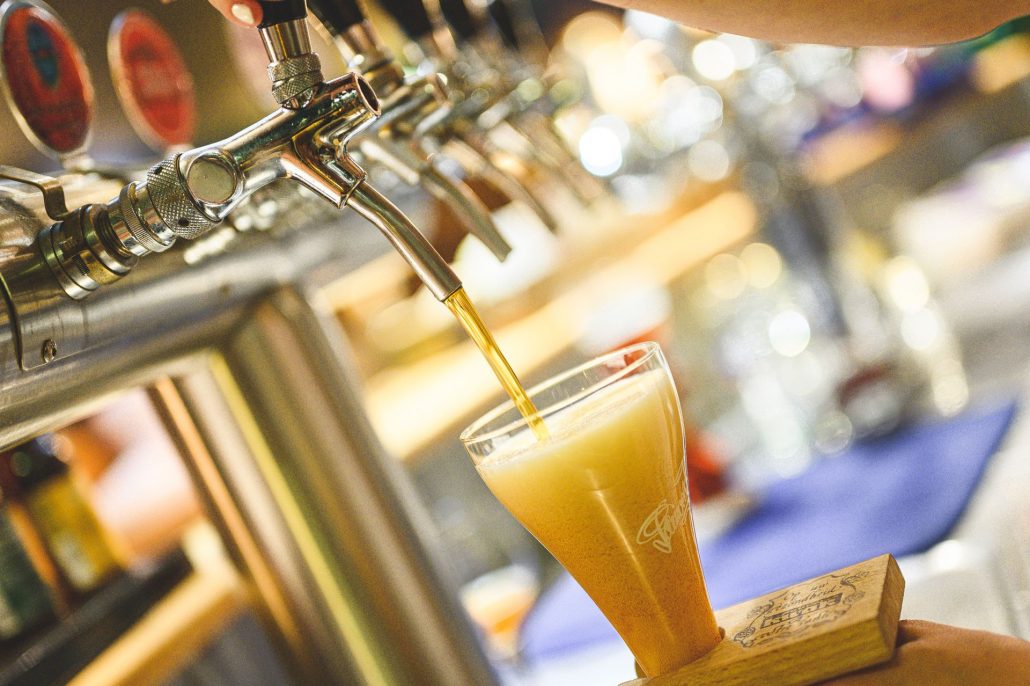
Who do we recommend it to?
For the authentic and ritualistic –
Pamper multiple senses at once! If you crave intense scents and truly authentic aesthetic experiences alongside the enjoyment of flavorful tastes, choose from our freshly tapped beers and experience the true ritual of beer drinking.
Tip:
Try your favorite beers in bottled and draft versions too! Our carefully selected draft beer assortment includes our main beer types, so everyone can find their true love.
Did you know?
Most beer-drinking societies, no matter where in the world they are, are still able to argue at any time over the eternal question of whether draft or bottled beer is the real deal. The majority of Hungarian beer consumers swear by the draft beer and claim that freshly tapped beer is always better than its bottled counterpart. Is it really true?
Truly experienced beer lovers know that neither type is better or worse, they are simply different. Depending on whether we consume draft or bottled beer, we may experience different taste sensations.
The differences in flavor profile are mainly due to different pasteurization techniques, storage methods, and the duration of time from production to consumption. A beer travels a completely different path when it is transported in an ideal tap-ready, up to 50-liter closed, sunlight and temperature-protected barrel, and then it is poured into a glass even two weeks later, than when it is delivered to the consumer in a can or bottle months later. The former offers a truly fresh, aromatic, refreshing experience, while the latter gifts us with well-blended, slightly spicier flavors.
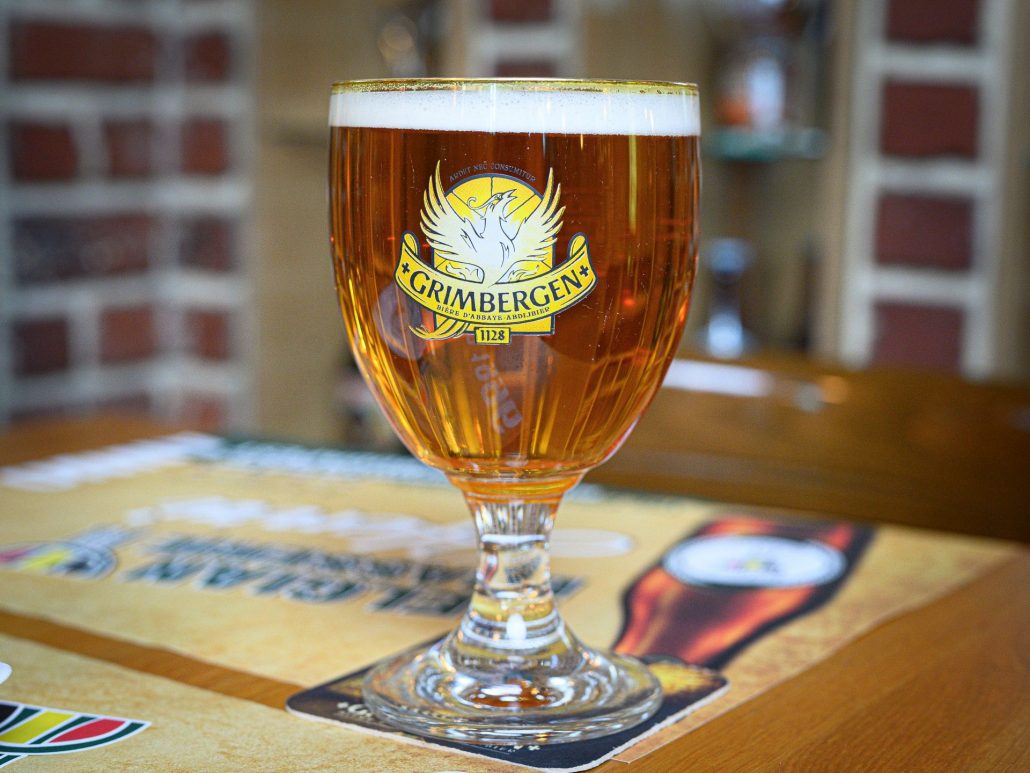
Who do we recommend it to?
For the beginners and the light-hearted
If you don’t want to deviate too far from the Pilsner line but still want to experiment and get to know the world of Belgian beers, look no further! It can be an excellent companion to a light dinner, a hearty appetizer, or a tasty salad.
Did you know?
The category of Belgian light beer differs greatly from the taste world that Hungarian people are used to as a light beer, as it does not resemble the popular Pils style at home in any way. They are made up of top-fermented beers, which are prepared with a unique process and aged for at least 4 months, but even several years. The beers that mature in bottles, barrels or fermenters are complemented with yeast, spices, and flavors. The significant part of these brews, which shine in more intense colors of golden and bronze shades, are made of limited edition craft beers.
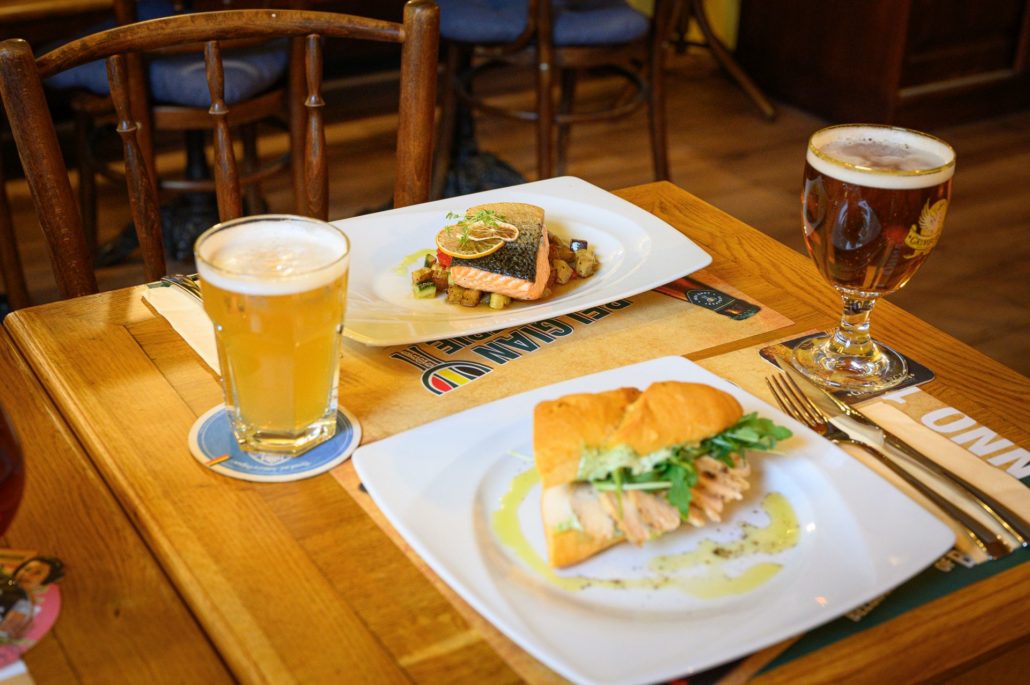
Who do we recommend it to?
For those who want to cool down and refresh themselves
It feels especially good on a hot summer afternoon because of its citrusy taste, making it an excellent thirst quencher. The secret to its pleasant coolness lies in the fact that its richness and distinctive seasoning cleverly suppress the drink’s true temperature, making it easy and quick to drink. It goes well with poultry dishes and lighter salads.
Did you know?
It is widely believed that wheat beer started its conquering journey from Germany, but few know that the Belgians had been brewing wheat beers much earlier, among the first in the world. They have since maintained and practiced their tradition in both brewing and seasoning. However, there is a huge difference between the flavor of the mostly lemon and rice accustomed edelweiss-type beers and the taste of traditional Belgian beers. They are much more rich, flavorful, and spicier, with common ingredients such as lemon, orange, curacao orange peel, and orange blossom. Our restaurant’s basic principle is that we do not serve our wheat beers with lemon slices because it would suppress the unique spicy taste that the brew master intended.
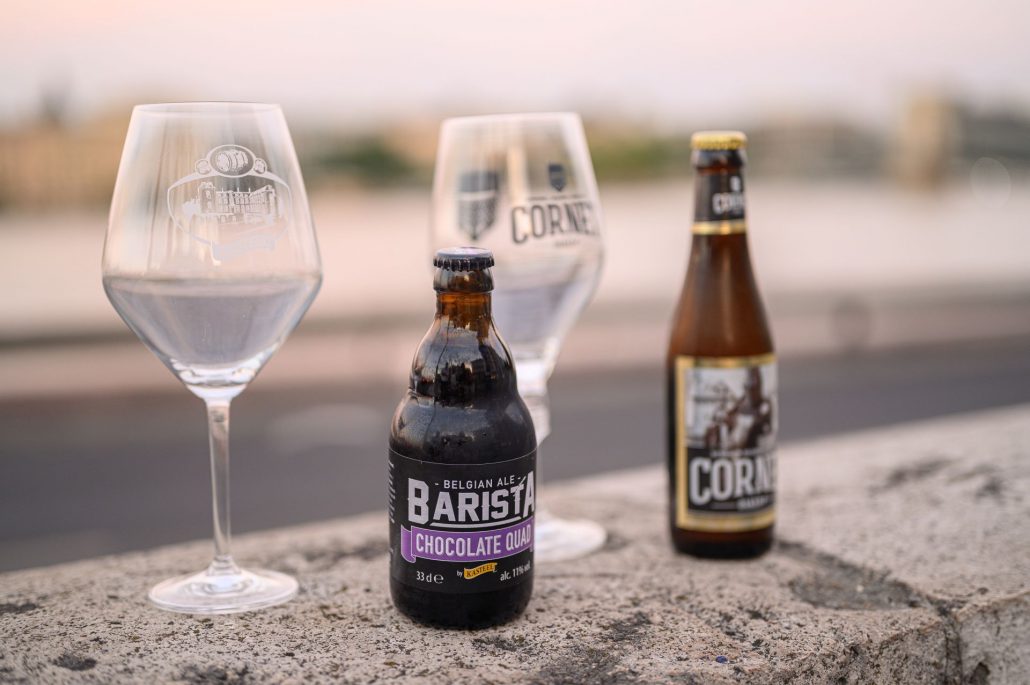
Who are they recommended for?
Experienced and those who seek more depth
Thanks to their distinctive flavor, we primarily recommend our brown and amber beers to experienced beer drinkers. They can be an excellent accompaniment to heavier, more substantial dishes or desserts.
Tip:
If you would like to experiment with our more full-bodied brown beers, try starting with the lighter version of the same beer. This way, you can easily discover the characteristics of the beer family, and then you can bravely experiment with the much more complex flavored brown version.
Did you know?
The Belgians are the most professional in brewing brown and amber beers. Their masterpieces range from dark yellow shades to bronze and even black colors on the color scale. Typically, brown beers are brewed several times and flavored with multiple malts, making them sweeter and much more full-bodied than their light-colored counterparts. They have a much more solid and substantial foam than other beers. Their reputation is enhanced by the fact that the world’s strongest beer, the 12% Bush Caractère, is among the brown beers.
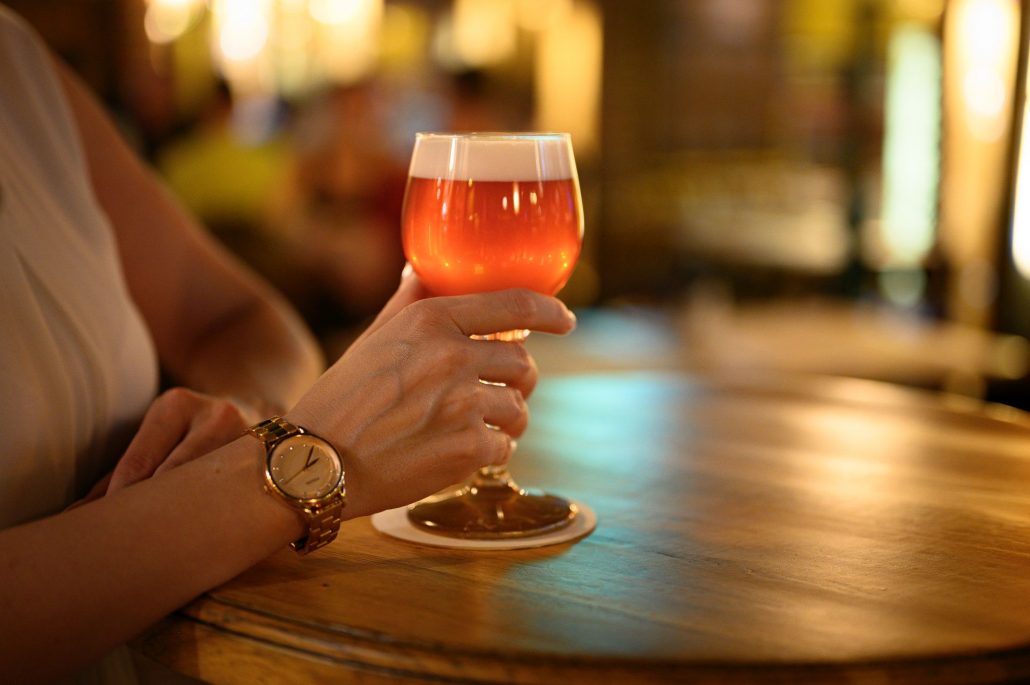
Who are they recommended for?
For ladies, gentlemen, and those with a sweet tooth
“We would send it to anyone who loves it” – we are honestly delighted that our beloved fruit beer has now outgrown the unworthy label of “women’s beer” and has become a real delicacy among the Hungarian population, which almost everyone enjoys. Whether it’s a summer evening, a dessert accompaniment, or the final chord of a substantial beer selection, you can never go wrong with a tasty fruit beer.
Did you know?
Belgium has been known as a significant fruit-producing country since ancient times for a reason. Its main profile is cherry production, 90% of which is bought up by breweries to make cherry beer, paying tribute to national tradition. Belgians typically do not work with fruit aromas but rather age their beers on fruit beds. Fruit beers used to be mostly low-alcohol beverages, but nowadays, fruit is used to flavor stronger and more substantial brews. You can find 80 types of fruit beer at our place.
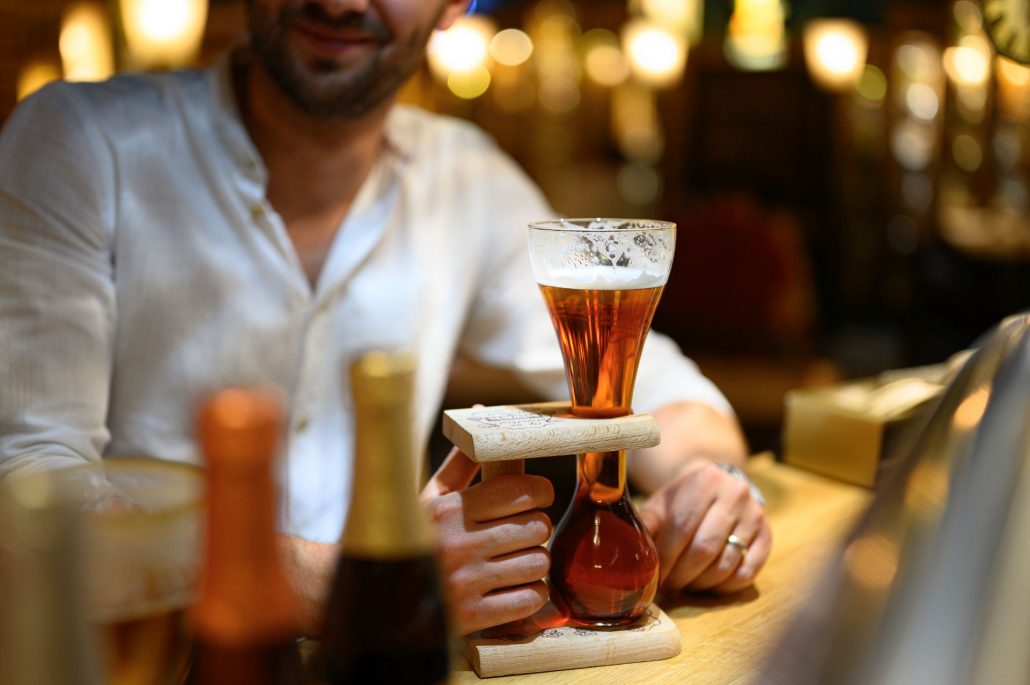
Who are they recommended for?
For the experienced and those hungry for curiosities
We recommend our Trappist beers to experienced beer drinkers who appreciate truly unique gems. If you only drink two beers when you visit us, one of them should be a Trappist beer. They are such exceptional brews that it’s a shame to miss this experience. We rarely pair them with food because they are so unique and substantial beers on their own.
Did you know?
The term Trappist beer is used for beers brewed by Trappist monks. Trappist beers can be light, amber, or brown, but typically, they do not make fruit beers. Their brews are unique in themselves, each one is aged in barrels, which gives it an extremely original, distinctive, and incomparable flavor. They are made according to recipes that are hundreds of years old, a true curiosity.
Out of the 102 Trappist monasteries still in operation today, seven are involved in brewing, six of which are in Belgium and one in the Netherlands. Only these seven breweries are allowed to use the Authentic Trappist Product logo, which indicates that the product was made in accordance with the requirements set by the International Trappist Association, which are as follows:
-The beer must be brewed within the walls of a Trappist abbey or under the supervision of Trappist monks.
-The Trappist community determines the operation of the brewery, the brewing process, and the commercial sales channels.
-The brewery’s activities are guided by self-sufficiency and charitable purposes, rather than the pursuit of maximum profit.
Our restaurant has a connection with 6 Trappist beer brands, including the La Trappe brand from the Netherlands.
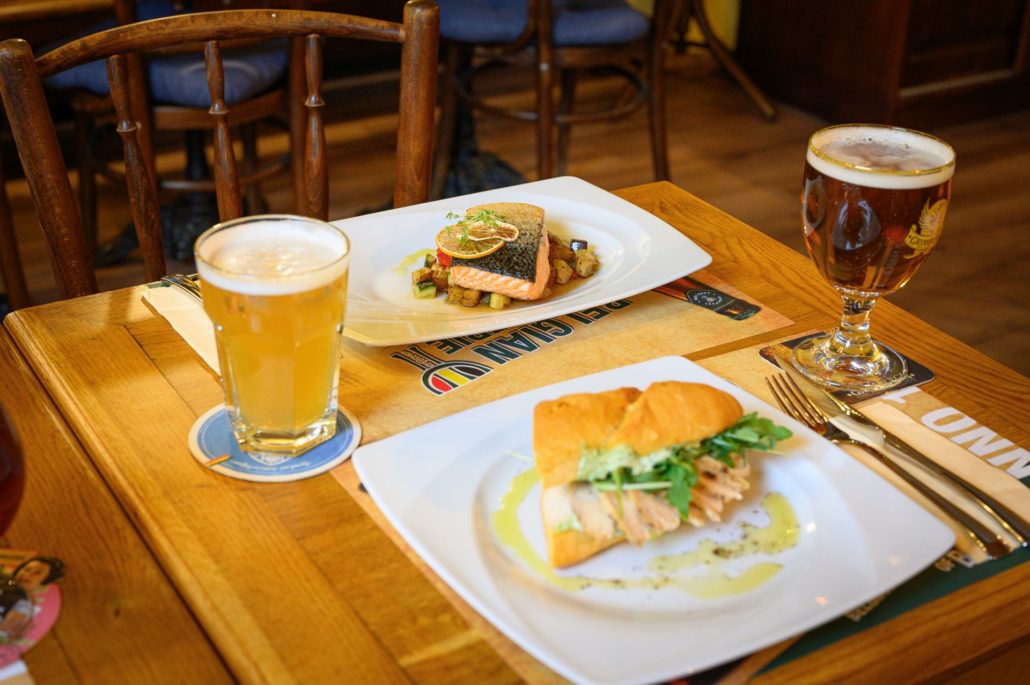
Who are they recommended for?
For those who are insatiable and experimental
We recommend spontaneously fermented beers to those who are experimental, experienced beer drinkers, and those who are open to fruit beers but want to taste something different, something more special.
Did you know?
The most important criterion for spontaneous beers is that they are made without added beer yeast. This causes their extreme taste effect: they are extremely sour, wild-flavored, and much less carbonated. To balance their wild taste, they are typically aged on a fruit bed. They mainly use berries, sour cherries, blueberries, raspberries, and black currants, and thus create the overall effect as if the consumer were biting into a sour fruit.
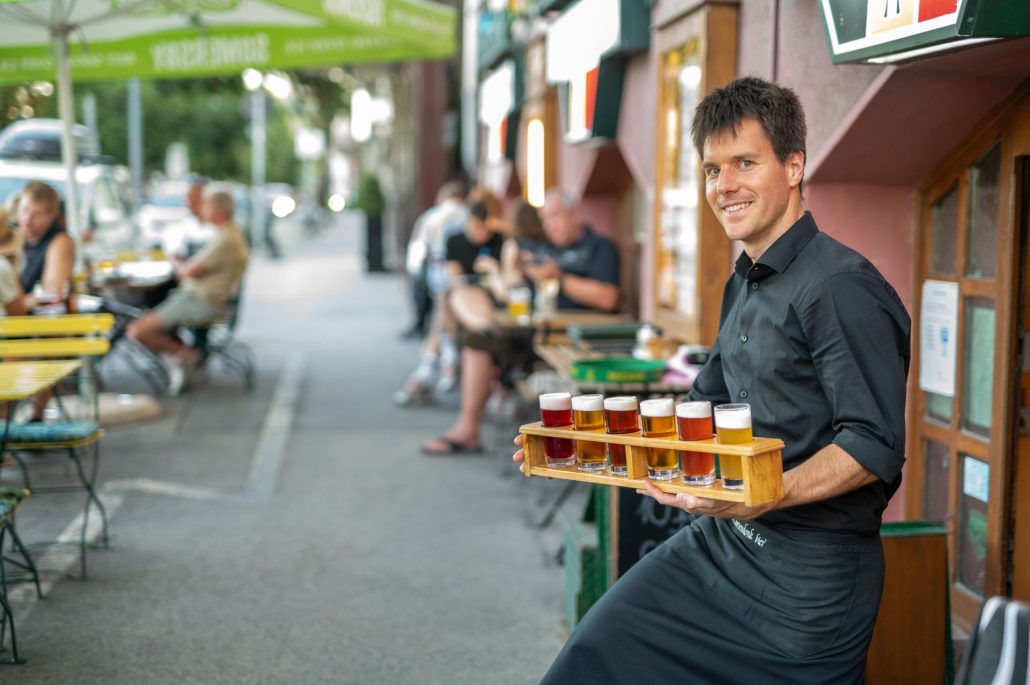
Who do we recommend them to?
For the determined and adventurous ones.
Explode your taste buds! Hybrid beers are much more divisive than spontaneous beers – we only recommend them to dedicated guests who know specifically that they want to consume them. In addition, we suggest them to the wild adventurers who have already tasted strong abbey brews and are not necessarily satisfied with their desires, so they want to try something even more special and unexpected.
Did you know?
Hybrid beers are usually made through a lot of experimentation, using much more malt or yeast, greatly deviating from traditional brewing methods. The result of their experimentation rewards us with such a wild flavor that, if we sip it, it can be simultaneously sour at first, then sweet, and finally explode in our stomachs. It is not surprising, therefore, that only the most experienced beer drinkers who are not afraid of anything ask for a taste.
A little beer history
Chronologically, spontaneous fermentation beers were the first brews when beer making was still in its infancy. At that time, it was usually the women’s job to brew beer, whose product was not yet called beer but barley juice. At that time, beer yeast was not yet known, so fermentation started completely naturally with spores and fungi coming from the air. Women put the brews under the windows, where they stirred them from time to time and waited for them to ferment and the drink to be ready. This process, of course, was much longer than the fermentation of brews made with yeast.
Today, spontaneous beer is traditionally made only in the Brabant province of Belgium, as only here is the quality of spores and fungi sufficient to start fermentation.
A little witchcraft: the real witches of the Middle Ages lived on beer making.
Have you ever wondered where the endless character of our childhood stories, the evil witches who fly with brooms, wear pointed hats, and toss bizarre ingredients into their huge cauldrons, comes from?
You would never have believed it, but the inspiration for the depiction of this fairytale figure originally came from the medieval brewing women who were later declared witches. Although it may seem surprising at first, with a little thought, we can immediately see the obvious similarities.
The experienced women who were skilled in “brewing” made beer in their huge cauldrons, often with a strange smell, and often stirred the peculiar brew that was flavored with bizarre ingredients, such as herbs, orange peels, coriander, various roasted malts, cultivated hops, and other secret spices. They always kept their brooms close by, constantly ensuring the cleanliness that was extremely important during beer brewing. The cat (regardless of its color) was not only the best friend of witches but also of brewer women, as being the best mouse catcher it was essential around the brewery, which often swarmed with mice due to the abundance of grain and hops.
The women then took their finished elixirs to the market, where they distinguished themselves from other vendors by wearing tall hats with pointed tops that became the symbol of their trade.
The beers made according to a variety of mixed and secret recipes enjoyed extraordinary popularity, and although business was good for a while, their story eventually had a sad ending. The women’s growing income began to catch the eye of the church, which wanted to claim this profitable business for itself. In order to do so, they declared the brewer women as corrupt women and bestowed upon them magical powers, making them the scapegoats behind various illnesses, deaths, and other horrors.
M-S: 12:00-24:00
Kitchen to: 22:30
No products in the cart.
A legjobb élmény biztosítása érdekében olyan technológiákat használunk, mint a cookie-k az eszközadatok tárolására és/vagy eléréséhez. Ha beleegyezik ezekbe a technológiákba, akkor olyan adatokat dolgozhatunk fel ezen az oldalon, mint a böngészési viselkedés vagy az egyedi azonosítók. A hozzájárulás elmulasztása vagy visszavonása bizonyos funkciókat hátrányosan érinthet.